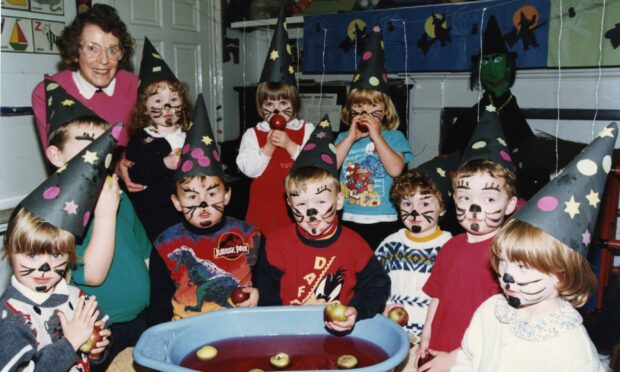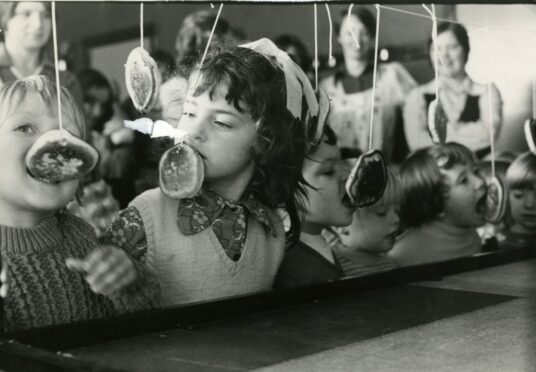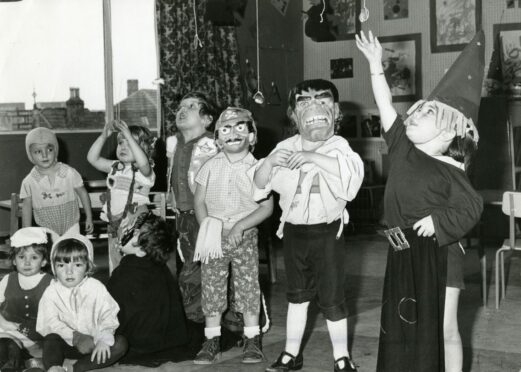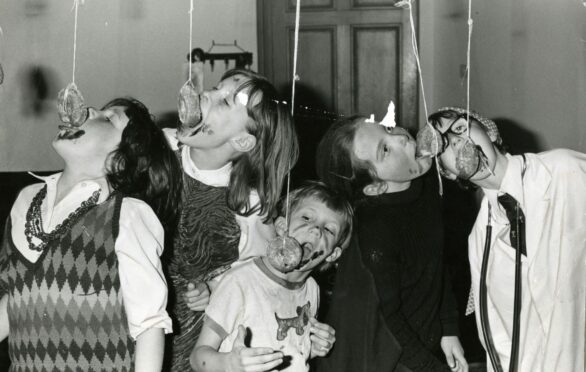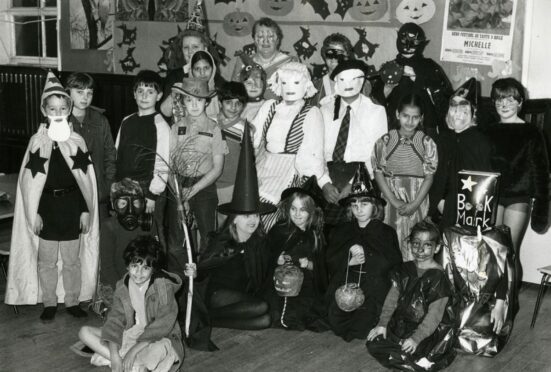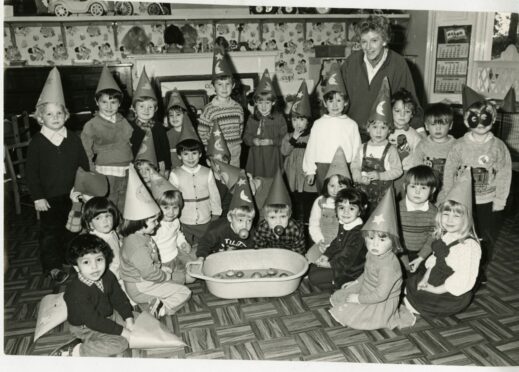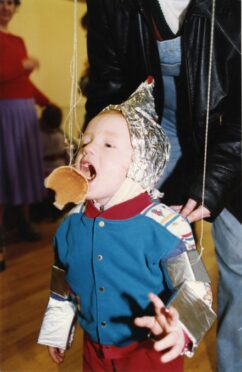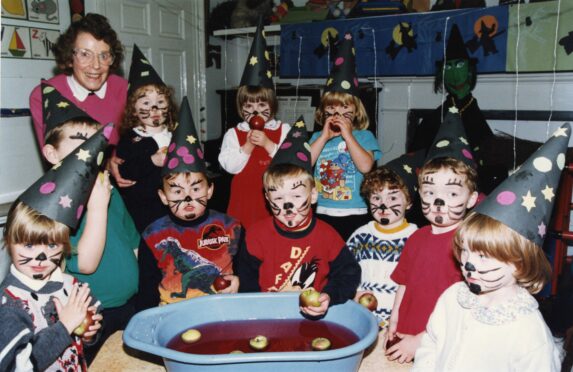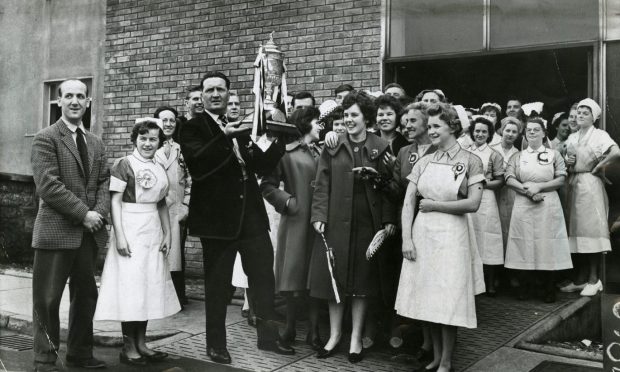Children across Tayside will already have their fang-tastic costumes at the ready and pumpkins picked ahead of Halloween this weekend.
After the cancellation of last year’s festivities, many little ones will be enjoying spook-tacular celebrations and a return to guising.
They’ll be following in the footsteps of kids throughout the decades who have donned their best homemade black binbag creations, witches hats and frightening face paint.
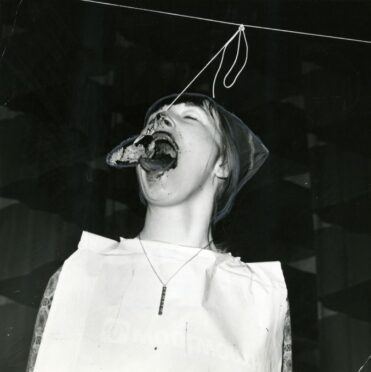
After all, Scotland is the true home of Halloween and its enduring traditions.
Halloween has its roots in the ancient Pagan Celtic festival Samhain which started on the eve of October 31 to mark the end of harvest season and the start of winter.
Celebrations would continue through the night ending on November 1.
Bonfires would be lit and rituals carried out, with the belief that these had cleansing and protective properties.
It was thought the veil between the living and dead was at its thinnest on October 31.
Many believed the spirits of the dead would walk among the living, giving Halloween its supernatural beginnings.
Once the festivities were over, people would relight their hearth fires at home using the bonfire flames to bring protection over winter.
In later centuries, the Christian church marked All Hallows’ Eve on the final day of October ahead of All Hallows’ Day on November 1.
All Hallows’ Day became a hallowed – or holy – occasion to celebrate all saints who did not have their own day.
The folklore and superstition surrounding Halloween has long been recorded by writers and poets, one of the first poems on the subject was penned by Robert Burns.
His 1785 work ‘Halloween’ makes references to fairies, storytelling, pranks and dancing.
Burns’ poem reflected the evolution of Hallows’ Eve to the Halloween we’re more familiar with these days.
Connecting with the dear departed and warding off evil spirits was replaced with more light-hearted activities like fortune telling.
And in the 19th Century it was seen as a match-making opportunity for young women.
Mirror-gazing became a Hallows’ Eve tradition where people hoped to catch a glimpse of their future betrothed in the reflection.
One enduring tradition is that of dressing up. Initially people dressed up as the saints to be celebrated on All Saints’ Day.
But over time, young people instead dressed as spirits, believing they would be disguised among any true spirits walking in their midst.
Frightful fancy dress was soon embraced by pranksters who saw it as an opportunity for Halloween hijinks and playing tricks on neighbours.
And adding to the frightful fun, was the tradition of carving grotesque faces into neeps or even potatoes to make Jack o’lanterns.
The tradition was inspired by the bonfires of the past, with the idea being they kept evil spirits at bay.
But in 1902, it was questioned whether Halloween was still relevant in the 20th Century.
An article in the Dundee Courier said: “Auld Yule and Halloween – feasts that our fathers lived for and our poets sang of – are now termed out of date, absurd and even barbaric.”
Despite the concerns raised in Dundee that year, guisers kept the tradition going in Montrose, parading down the High Street with “enthusiasm and hilarity”.
There was no danger of Halloween dying out in Dundee during the 1920s as thousands descended on the Drill Hall each year for a fundraising Halloween carnival.
Described as “a gorgeous panorama of beauty and revelry”, the dress code put the “fancy” in fancy dress, as women donned beautiful, themed gowns.
One lady came as a sunflower in a dress with a black bodice and golden skirts, another was a water nymph wearing a gown of green trimmed in shells.
There were no such revelries during the 1940s as the Second World War took its toll.
Festivities were far more subdued with local WRI groups hosting parties for children to keep spirits up in difficult times.
With food rationing, the blackout and shortages, Halloween carnivals were a thing of the past.
These days, there’s no rationing and certainly no shortage of fun – or supplies – as shops are bursting at the seams with Halloween goodies and creepy costumes.
And youngsters across Tayside – or more likely their parents – are spared the strife of trying to carve neeps, with pumpkins far more popular for making lanterns.
